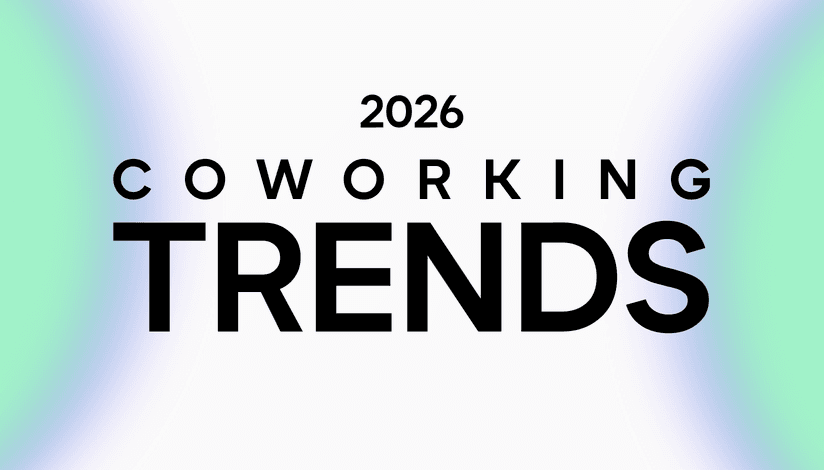Not so long ago, I was lucky to get acquainted and talk to an amazing person! Claire Carpenter is an award-winning leader, a successful social entrepreneur, and an excellent executive coach.
Claire founded The Melting Pot—Scotland’s Centre for Social Innovation—as one of the world’s first coworking spaces way back in 2005.
By gathering and galvanizing people into a grassroots business development team and harnessing their commitment and skills, Claire created her dream or her nightmare—depending on the day!
Since then, under Claire’s constant leadership, the organization has gone from strength to strength and diversified how they make a social impact. During the recent Covid crisis, the team navigated the storm. They pivoted, mobilized, and moved locations, then more than doubled their membership in under a year.
In addition to Coworking, The Melting Pot provides consultancy and leadership coaching. They help others make great coworking hubs and coworking cultures. They generate social impact through the innovation of tools, methodologies, and services. They have helped hundreds of individuals develop ‘Good Ideas’ for social change. They share this proven and successful incubation program with partners for delivery in other hubs—so good ideas can spread.
Right now, you have a unique opportunity to learn more about Claire's journey, the work of The Melting Pot, and her thoughts on the role of social innovation in creating a better future for all.
1. How did you get the idea of creating and launching a coworking hub?
The concepts that came together to form ‘my big idea’ came from a variety of lived experiences. I believed I had a genuinely simple yet innovative idea that would help my friends and peers and that it just didn’t exist yet. I was motivated to try and make it happen. I wanted to make an impact with and for people who were making social change in my adopted home city of Edinburgh. I have always been into building relationships and community, and love buildings. Now I consider myself a ‘place-maker,’ a community builder, and an Entrepreneur.

My life and the world were very different in the early 2000s to now. I’d returned from a year traveling, had been living in a women’s housing coop in Edinburgh, and had just completed a post-grad course—a Master’s in Human Ecology. This is a study of the systemic and interconnected problems of the world. My research project was on the motivation of environmental and social activists and the barriers to getting people involved in social change.
Everything in that course demonstrated that there’d be significant systemic problems in the decades ahead. That we’d all be ‘doomed’ by the 2020s.
We needed to get people involved in making social change, resource them, and most importantly, maximize their resources and sustain their efforts and energy. The need for this has only increased as we head towards our collective Tipping Point and resources become tighter.
When I finished the academic course, I was depressed. I felt powerless against the forces that would define our generation and period in history. So I went into another self-led research phase looking for something practical I could do about the complex challenges ahead of us and apply what I’d learned, researched, and how I’d felt as part of a community of social activists. I had the seeds of a ‘big idea,’ but making the commitment to do something about it was a whole other thing.
So I started with what I knew, used my lived experience and connections, followed my intuition, and pursued my big idea. I didn’t want someone else to do it before me! The idea even kept me awake at night. Initially, this was due to excitement and a buzzing brain, and then ultimately due to stress, fatigue, anxiety, and lack of all sorts of experience, management skills, and tools.
So that’s a summary of where it came from. Basically, the understanding of different needs for myself, from my friends, my colleagues from the organizations I’ve worked in. Flexibility, affordability, and community.
2. What were the core concepts of your ‘big idea’?
I wanted to create a resource base in Edinburgh that enabled a specific community to come together—to help ‘social innovators’ to work, learn, connect, and make social change happen.
The key concepts behind the first phase of The Melting Pot was a belief that: the timeshare model of workspace + shared resources + community of eco-social activists = greater motivation, impact, profile, opportunities and efficiency.
As a mature student and freelancer, I was lonely and ineffective working from home in my single room in a large shared house. There were no shared and flexible workspaces I could go to. As a freelancer for the Third Sector, I was not constituted as a charity, so couldn’t go and work from the few ‘Charity hubs’ in Edinburgh. Offices were available on 5-10 years leases—and I did not think in those terms and couldn’t plan my business around them. Internet cafes had just about died out as a business model as people had got (very expensive and slow) internet at home and giant laptops.
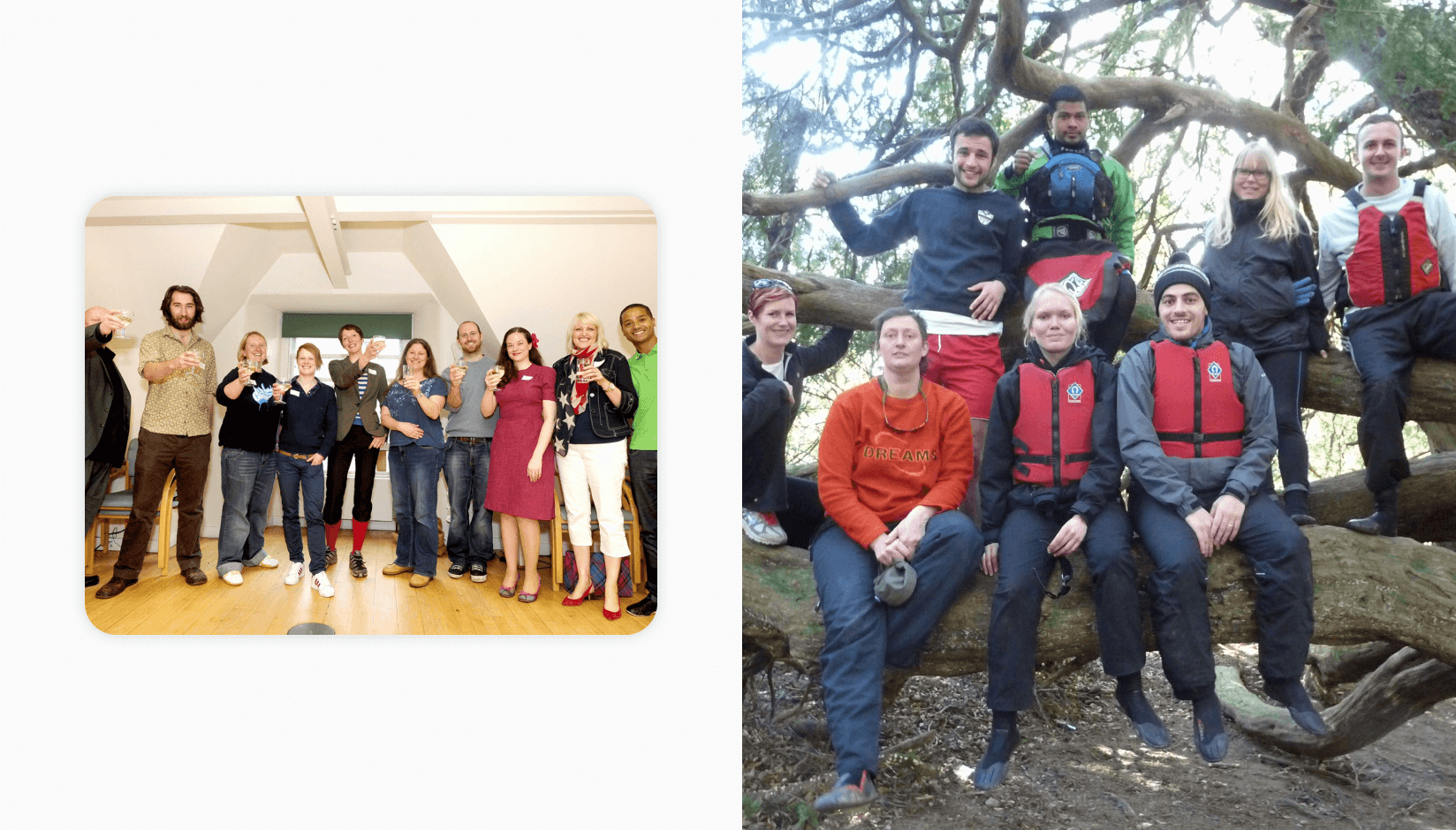
Prior to that, as a Third sector employee, I’d experienced the boom-and-bust nature of the funding cycle and the implications of this for organizations and employees. All the charities I knew were extremely financially under-resourced and stretched—money mattered. Staffing and office costs were often highest on delivery costs but not often well used. Leases and moving costs meant people were stuck. We were either too few people or too many people within our workspace, depending on the phase of the cycle. And the work environment was dull—think of depressing rooms and horrible furniture. No matter how hippy I was, I still had a strong aesthetic.
Growing up in a family that ran small businesses, I’d experienced boundary and resource issues for people running SMEs and working from home. How do you switch off?
I was (I am) female. If you don’t have an 'office,’ where do you safely and effectively meet your clients or potential clients?
Especially if you work from your bedroom! In those times, coffee shops were noisy and not setup for remote workers. They were also an expensive way of being productive when out of your home. And I still don’t believe they’re effective places to work.
There was no affordable, flexible way for ‘my people’ to come together with other professionals in a safe and shared workspace and build their networks, their confidence, and their motivation. Leases were a big commitment. Remember, this was well over a decade before the notion of ‘flex-space’ came along—after people like me disrupted the commercial real estate offering and returned some power to the people!
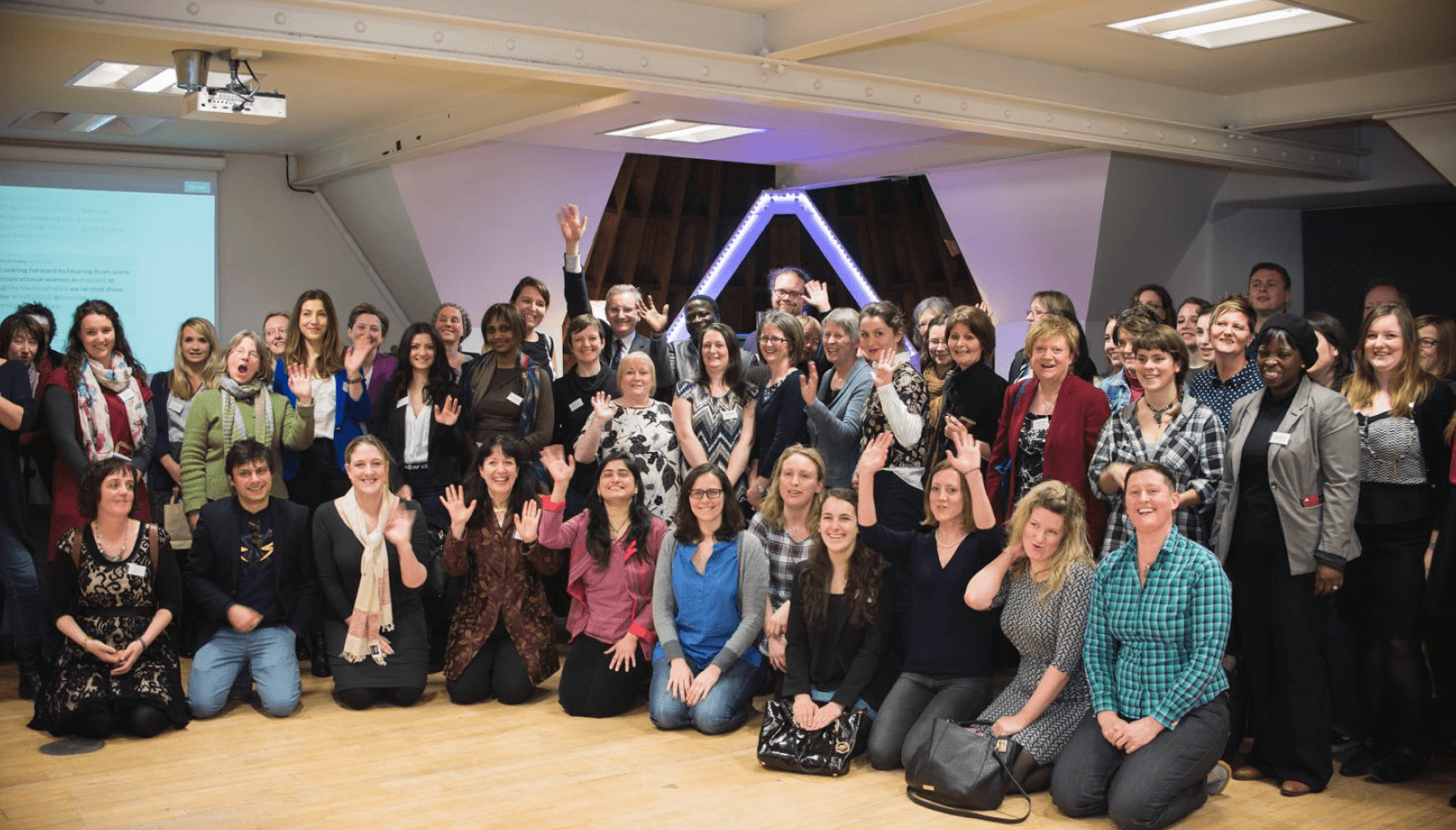
Buildings are habitats. Different spaces or buildings bring people together in different ways—be that in churches, schools, parks, offices, or more unusual habitats like eco-villages. But a building is just a shell. It’s the purpose of that space, the culture and energy contained within it, that matter and shape the experience of its users. The Melting Pot was, and still is, a crucible, a vessel, for the energy made and contained inside.
I also knew that fundamentally, people need people and crave a sense of belonging. Think of Maslow’s ‘Hierarchy of Needs.’
Coworking hubs can meet the basic and higher level needs humans have—and ultimately help people towards self-actualization.
I understood the principles of social and intellectual capital. These powerful forces are based on relationships of trust—and get things done. Strong interpersonal connections and relationships are what help create and sustain people’s resilience and momentum.
So I believed that bringing people together in a shared space, with shared resources,with the right culture, would ultimately create impact, connection, and serendipitous opportunities—all now called ‘water-cooler moments.’ I have proved to be correct on all accounts.
Side note: Third sector—the segment of a nation’s economy that is made up of neither public nor business concerns, as non-profit health or educational institutions. Collins dictionary
3. You talk about being a ‘placemaker.’ What’s that about?’
I believe that places are really important—for well-being, identity, and in shaping ambition. We know that physical design affects how people feel, engage with others and the area around them.
Edinburgh is a great place to live and be. It’s recently been voted the best city to live in in the world (Time Out magazine 2022) and is one of the top destinations in the UK. But it’s an increasingly expensive city—the second most expensive in the UK.
So if you’re operating with tight financial constraints, then taking on leases in Edinburgh is just too risky. The economic implications of the real estate market meant that people I knew were forced to either work from home—when this was not normal or acceptable—or from some horrible basement office.
My ‘disruptive model’ gave everybody a sense of equality and camouflage.
As a member of The Melting Pot, you could meet with clients without revealing how well your business was doing financially—how much ‘space’ you bought. It was your office—no matter if you were there one day a month, one day a week, or full-time. This was simple and, at that time, was radical! You could be in your start-up stage or in a mature and stable organization, it made no difference. You could meet with clients, funders, or potential partners in a professional, safe space. In an attractive, neutral, and warm environment. It’s simple—and effective—but it took time to catch on!

Employees of the Third sector want to ‘do good,’ and work is often outsourced to freelancers. More often than not, we don’t have job security, decent pensions, and all the perks and trimmings afforded in the public and private sectors.
I wanted to make a place that was nice for this community to actually go to—and that wasn’t an old religious institute or had lots of oil-based paintings of renaissance men in gilt gold frames—of which there’s a lot in this city.
I wanted a neutral, professional space that made people feel comfortable, whatever their background and age.
More people work from home now that it’s 2023 and coming into a new phase of the Covid-pandemic. There’s more choice in the matter too. It’s acceptable, and there are tools to stay connected to your team even when working remotely. But these tools and infrastructure didn’t exist back then. If you weren’t seen physically in the office, you didn’t exist! Now people have so many virtual personas and communication tools.
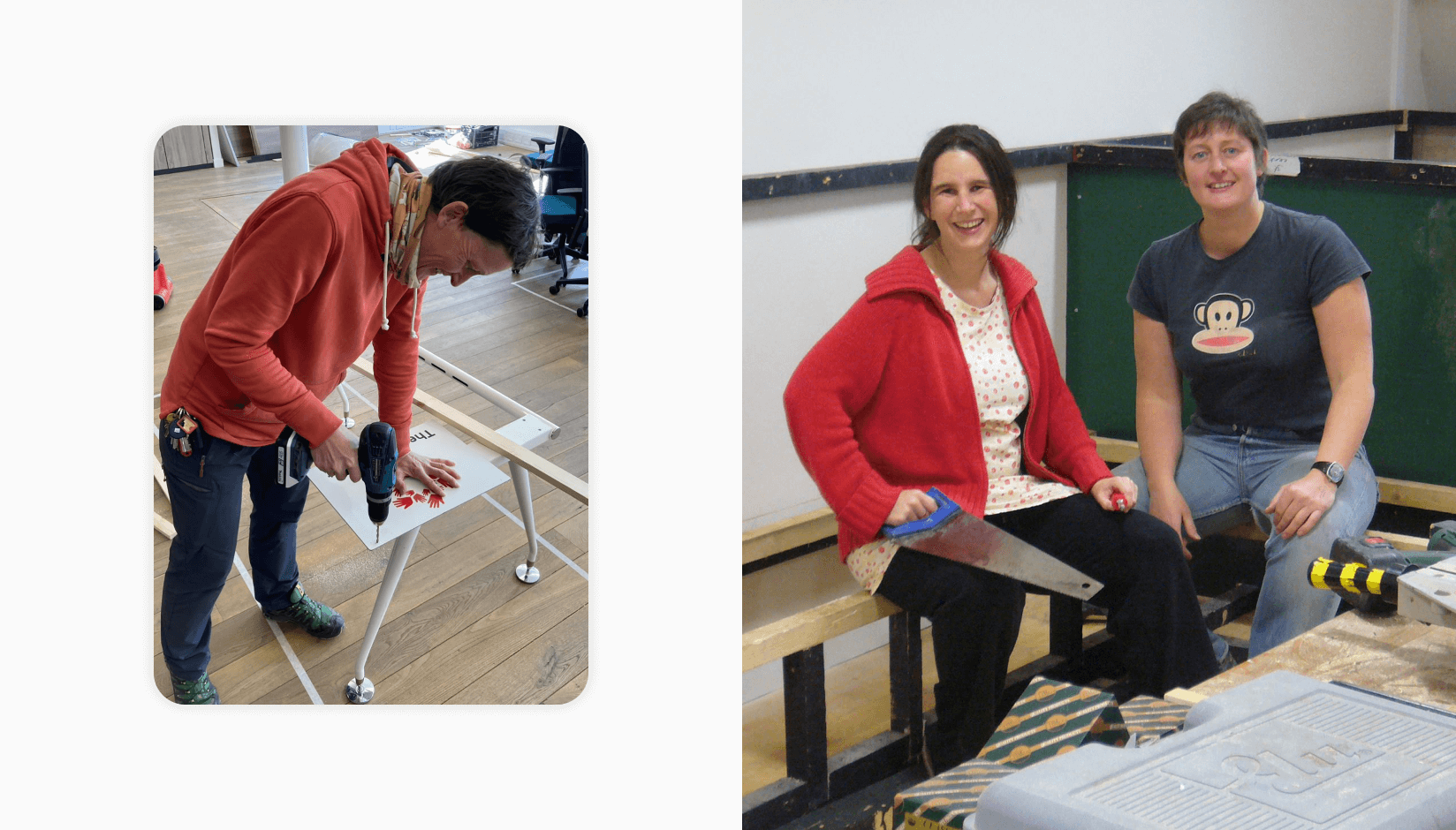
By creating this physical environment for people to flourish within, I have become a ‘placemaker,’ as well as a social entrepreneur and innovator.
My ambition was always for The Melting Pot to be ‘more than just an office’. It was about being a resource base for a specific community. It was and is about connecting them so that people can learn from and with each other, share their experience and add value to others, and find ways to collaborate. I’m pleased to say this is what we have done.
4. How did you know that the business would be a success when back in 2005, nobody knew about coworking?
I didn’t know if it would be successful!
Imagination and belief are essential for any start-up, as is a robust or realistic business model, but these things I knew less about!
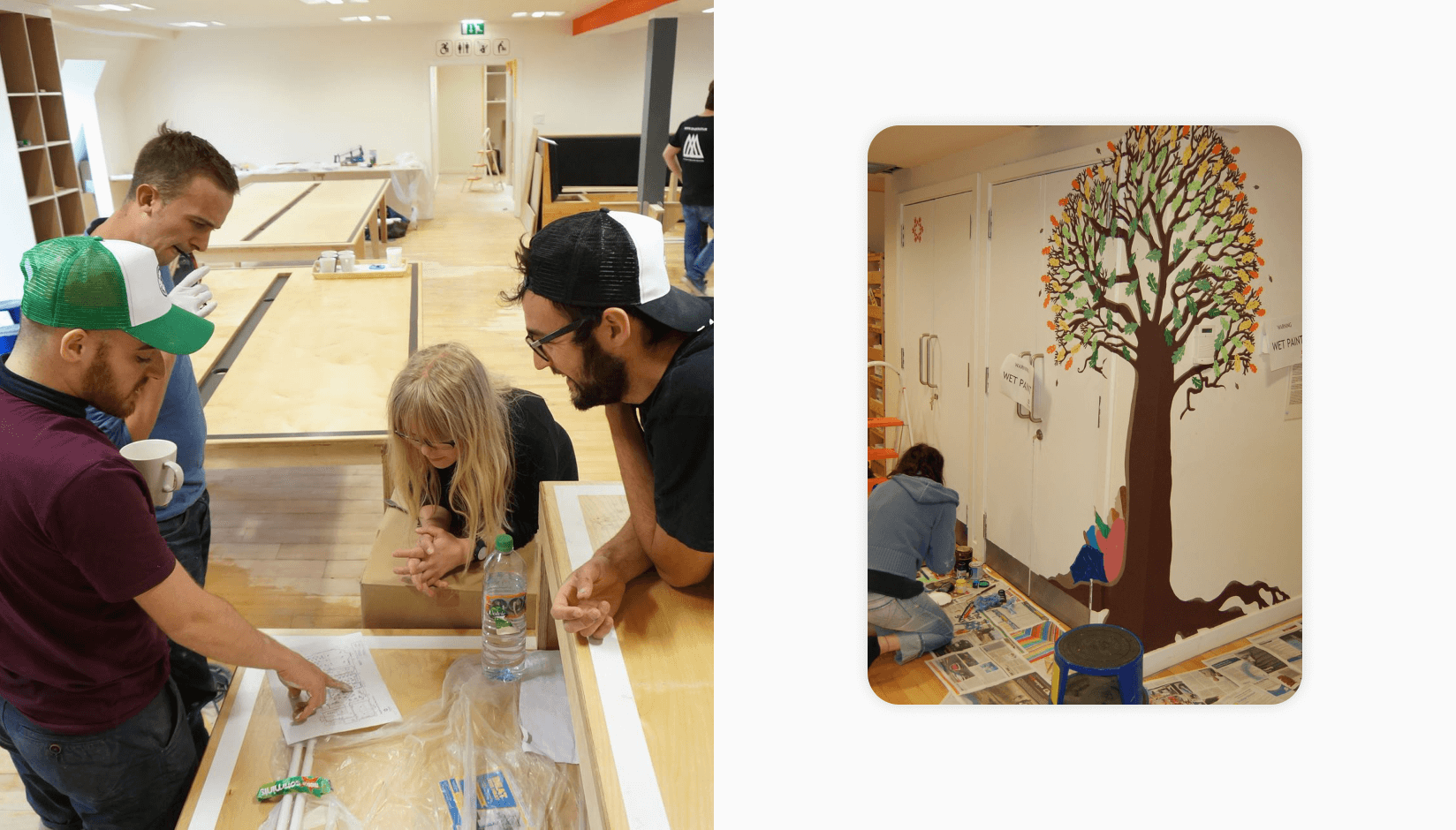
This was my big idea—a concept for services I believed were needed, and my desire to deliver it was strong. The research we’d done proved it was both needed and possible. And I was willing to put in the effort, for a while at least.
After a time, momentum builds, you’re in deep, and you just keep going… It’s sink or swim.
Prior to initiating The Melting Pot, I'd only worked for established charities and set up and delivered charitable projects. I had no ‘business experience’ and didn’t operate from a commercial perspective. Although I knew how to get people behind an idea and build projects from scratch with extremely limited resources, I didn’t see myself as an ‘entrepreneur.’ These days I realize I’m an ‘initiator’ and an ‘innovator’. At the time,I didn't have any money, a team, or a building. I didn’t have any experience that might logically deliver such a new concept. Where would I even start?
In any start-up situation, you have to give it your best shot. And sometimes your best shot isn't good enough. So many things make a project or business ‘successful.’ Some of these are out of your control: the environment, the context, and your relationships. You have to be willing to be vulnerable, invest over 100% of yourself into it, and have skin in the game.
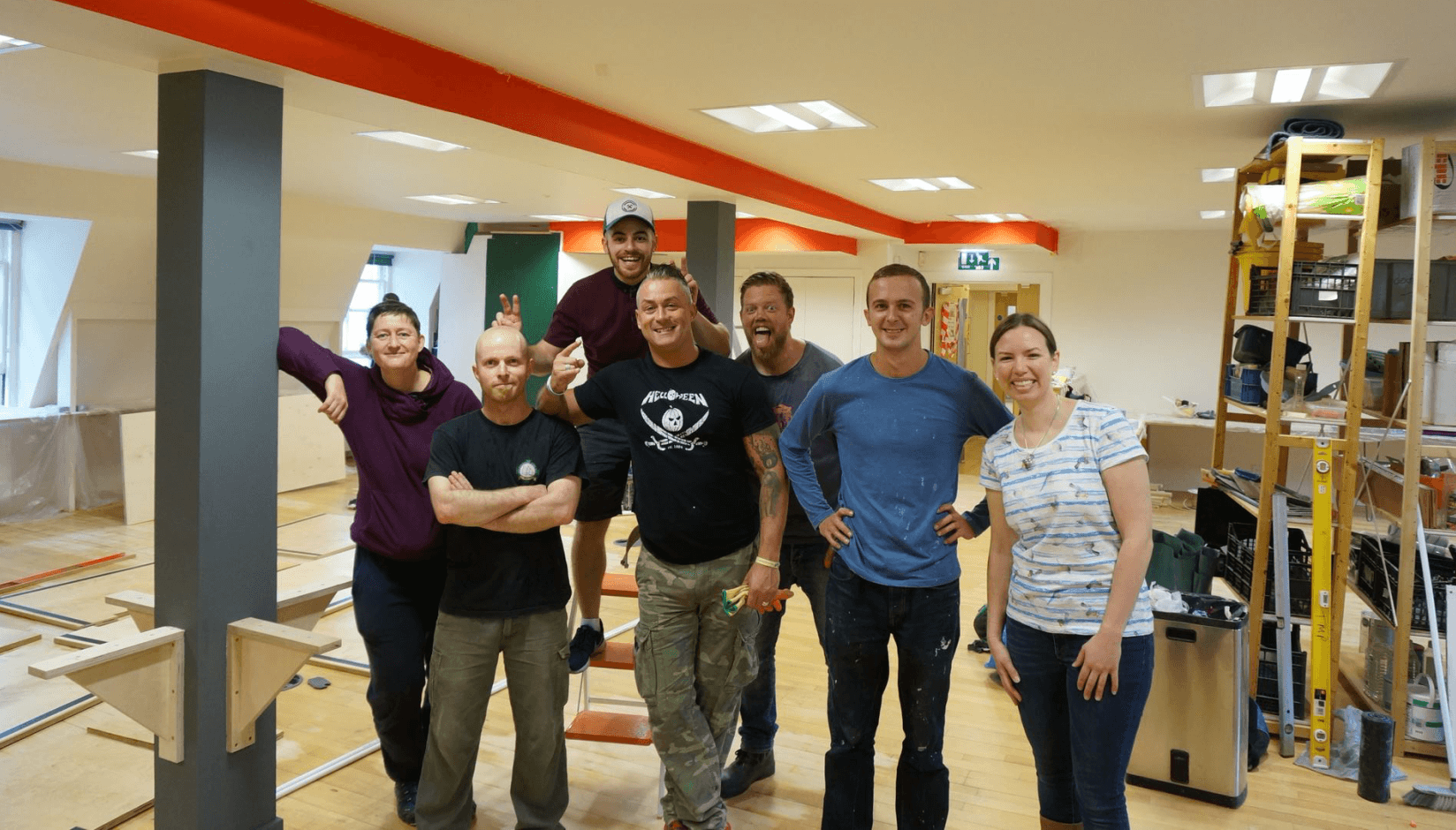
It took 2.5 years of development work done mostly by volunteers and freelancers just to get together the resources to secure the building and open the fledgling business to our ‘pioneer Members.’ We only had a few months of cash flow. And then, when we opened the doors, everything changed! It got really serious very quickly, with all that cash flow flowing the wrong way!
5. What were the key challenges of The Melting Pot during the first years of its existence?
It has been one challenge after another, and that has never changed!
Things were extremely challenging at the start, in the ‘concept development stage’—before we had a building or any physical presence, profile, and staff.
At this time, no one had heard of the idea of ‘Coworking’ so I had to explain my rationale of ‘timeshare workspace plus community’ applied to an office. This was a difficult task as I knew nothing about marketing and only a little about sales.

We had little money, limited capacity, and I had to coordinate contributions of a mostly volunteer, mostly remote, and part-time team. This was long before Google Suite existed—which would have made life so much easier.
I had lots to learn regarding starting a non-profit company. We created a non-profit sharing legal entity. At that time, ‘social enterprise’ was a new concept and there wasn't the same support as is available now. There were fewer funding options available to ‘social enterprises’ or awareness of that option for the Third sector.
It’s difficult enough to recruit people for the board of a start-up, let alone for a charity. I needed to find people interested in developing the idea and secure their buy-in to the vision and my ambition. Over time this ‘Development Team’ built momentum and gained traction. At the end of the day, we all had to be comfortable with the quality of the market research and business modeling done to seriously consider taking on the commitment for a lease.
We slowly acquired some small grants, which enabled us to undertake market research, develop a brand, and pay for a desk that up to four of us would sit around. We developed the protocols and infrastructure to be able to work together.
This chapter of the organizations’ development feels like a very neglected part of the backstory. It’s like winter—a time of hidden activity pre-germination. And it was long and hard! I got migraines—not a good sign.
And then spring came—we ‘opened’’—and the real challenges began.
Cash flow. Staffing. Communications. Service Development. Let’s just summarise by saying we were constantly learning-by-doing and IT was a nightmare.
Although there was a lot of goodwill from our customers who’d bought into the concepts of what we were trying to create, there was never enough money, there was no software for coworking spaces, and we spent hours on basic administration tasks that would be so easily done now.
I’ve since learned that there are three central pillars to any business, regardless of size or organization type.
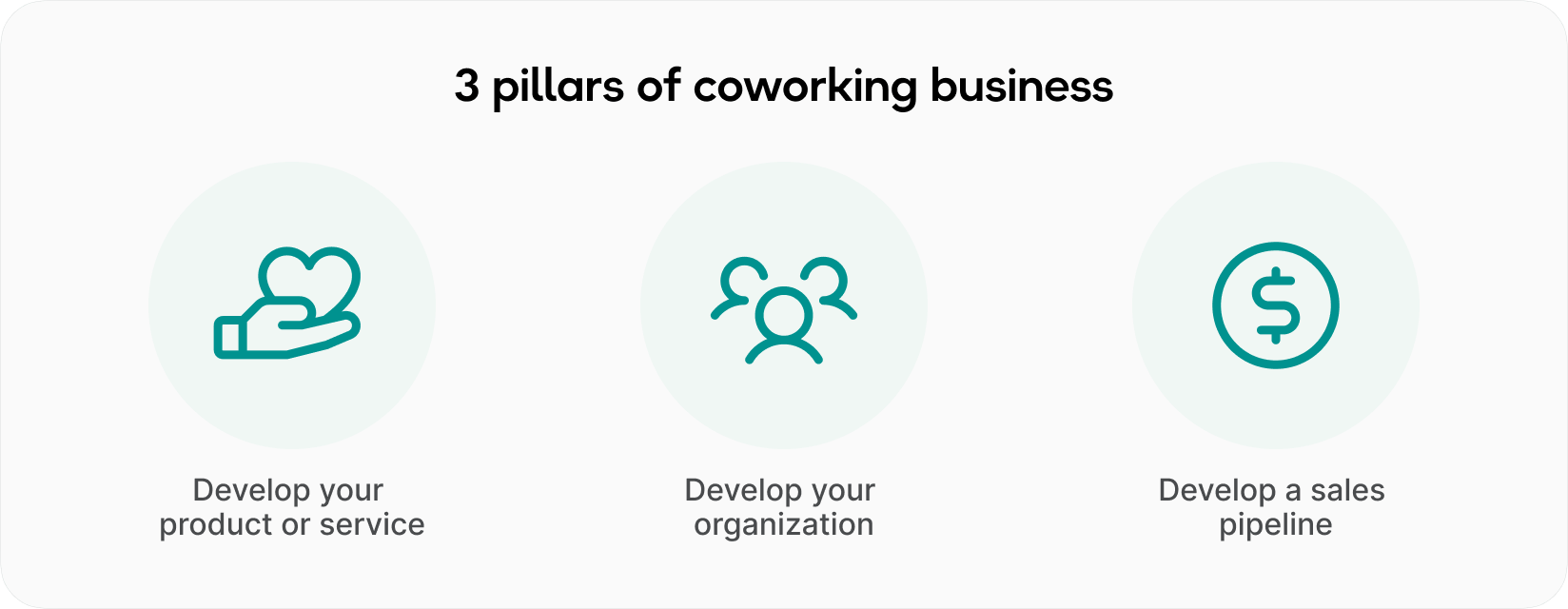
- Develop your product or service. Test it out, and refine it. Keep going.
- Develop your organization. That means developing the team, all of the administration, and the infrastructure.
- Develop a sales pipeline – and get business in the door, then keep it there.
We faced and overcame the myriad challenges presented in every one of these pillars.
6. How did these challenges change with time?
In the business concept development stage, many volunteers and a few freelancers were involved—it was a ‘grassroots project’. They’d invested a lot, and had bought into it, were invested into it. But when we opened our hub space, it was necessary to think about who was right for the team required for this phase of delivery. This was a sensitive matter, considering the volunteers who’d given many months or years towards a new non-profit project and hoped for a job at the end of it…
People are always a blessing and a curse—and the key thing to get right. I had to learn how to get the right people on the bus: who to employ, what they should do, and delicately make the transition of who did what.
I have worked with many great people over the years, but learning how to do so takes time. I experienced major burnout in the early years. I didn’t know how to manage myself and all my ideas and all the things needing to be done. I was drowning. It is only very recently that I’ve learned I have ADHD (adult attention-deficit), which gives me a different perspective on my life and the challenges I’ve faced—or imposed on others.
‘Opening’ was like going from being pregnant and thinking about having a family to suddenly having a baby and having to feed it, clean and grow it, and make it sleep at night. It’s a rude awakening to become an adult.
On reflection, we went through the same start-up challenges as many grassroots voluntary sector organizations. It’s a difficult dance articulating and demonstrating the need to funders, gathering all sorts of resources, and building and maintaining momentum in delivery.
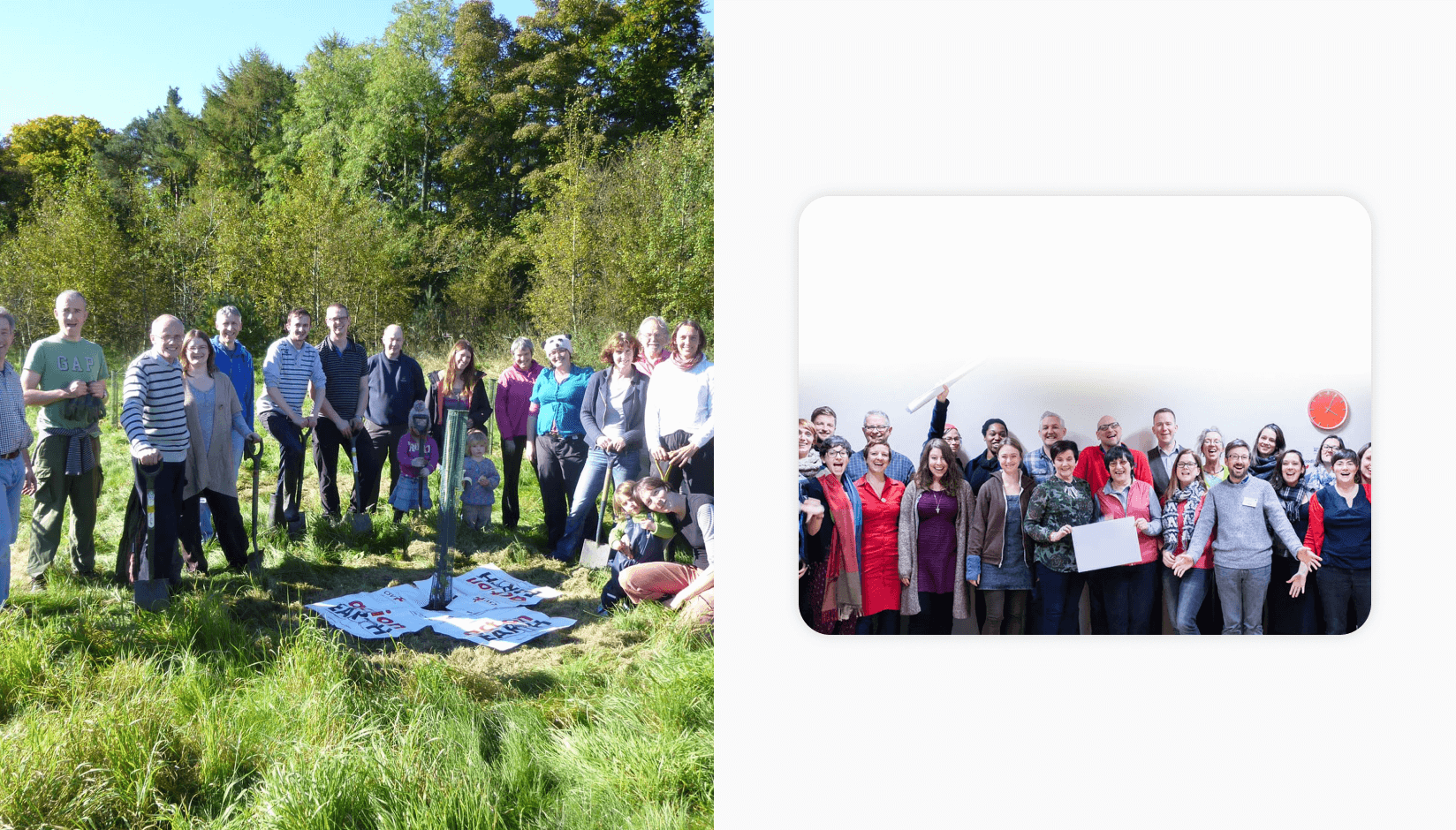
Additional challenges involved prototyping everything we did to develop the ‘coworking’ concept. This included developing internal operating systems, refining the community-building methodology, and articulating key messages. There were few opportunities to learn from anyone else about this—though maybe I should have looked further.
We built a community of people interested in the concept before we opened the space. But then we had to transition this community of interest into actual paying customers—Members—and build the relationships between people in this fledgling community.
Other problems were: cash flow, cash flow, cash flow, and cash flow. Managing to break even was a massive challenge that lasted many, many years.
I feel great empathy for the many independent Coworking Hub operators that take on significant financial risk with little financial reward just to serve a specific community. You make money if you own a building, not run ‘a shop’ in it.
Over time, you eventually sort one thing out and then another. Staff, systems, processes, cash flow all improve. Things settle down. It just takes time—and the right skills and tools. It would have been much easier to copy what someone else had done.
I think the biggest challenge over time has been staffing. Good people came and left—not because they were unhappy, but because there was limited progression internally, and many of them were young. The team was small, we were all learning, and shaping the organization and where it was headed. Eventually, we developed more robust income streams through both consolidation and diversification.
On a personal level, as a Founder, the challenge for me was to remain engaged over time.
I’m an innovator and a developer. I get restless doing the same old thing—and like to develop ideas into reality. I am not an administrator or steady state person. Once the ‘Coworking service’ was working—what next?
I spent the next ten years prototyping and developing new projects and programs, and then two business areas (Good Ideas and the Coworking Accelerator), which have made a positive impact. They’ve also been based on lived experience and need from the communities we engaged with—social activists and placemakers. They presented different challenges due to diversification and scaling. They’ve both been successful in their own way.
Generate recurring revenue and offer exceptional customer experience at your shared or coworking space
7. What were your key challenges during the ‘Covid years’—and how did you solve them?
As Scotland’s Centre for Social Innovation, we’ve always had a greater ambition than being ‘just a workspace.’ We’d reinvested any profits and capacity into meeting our mission—developing methodologies and tools which stimulate and support social innovation. We had built up some reserves but did not anticipate such a sudden blow to our core income-generating service—coworking
Long before Covid, we had searched for an alternative location to operate from. One that was bigger and cheaper. We’d been close a few times, but for a variety of reasons, it didn’t happen. However, such business development activity requires internal staffing capacity that we couldn’t afford. But you just have to work on all three pillars...
Then Covid came along, with enforced lockdowns of unknown duration. This was a desperate time! Suddenly, we were paying out thousands in rent and earning practically no income. The Scottish Government quickly imposed regulations—which resulted in a two-year period of enforced ‘working from home.’
Our only option was to leave the premises we’d been in for 13 years. The storm was too severe—we needed to find a new shelter.
I knew we needed to keep hold of the staff team as long as possible—as they were the only people able to rebuild the services in a new location. We all knew how valuable our services were for people—we believed in this value and that it would still be in demand after this period.
I also knew we had to retain as much of our reserves as possible and quickly find a new viable building to rebuild in—but didn’t know when the time would be right to have a clear run at being open.
The Furlough scheme was a huge help during these years. It meant we could draw down financial support from our government to retain employees. Those staff weren’t allowed to do work for us when they were furloughed, so we had to massively reduce what we were doing—which was impossible… Some of the skeleton crew closed down our services and our premises and maintained relationships with our customers through a virtual network.
Finding an alternative and suitable accommodation was a challenge in itself. Our target audience expected and needed a city center location. But this is where the property is expensive and in high demand. In this phase of Covid, the property market was in flux, unable to accurately predict what its value was and how people would return to the area in the future.
The senior staff and I looked out for ‘to let/ may sell’ notices that were springing up all over the city center. We worked up market research on need / demand, the business model and plans, investment and funding applications, and shortlisted a variety of options.
Eventually, we secured a partnership with Foundation Scotland, taking on their fabulous building, which is next to Waverley train station. The new venue allowed us to finally scale up our operations.
We opened in April-May 2021 during a lockdown. And since then, we have worked diligently to make our way back towards viability.
Special thanks go to our Board of Trustees. I met with them online on a far-too-frequent basis over the 2 years. They deserve a medal. It’s not what people expect when they volunteer as a trustee. Their mentorship and solidarity was invaluable.
8. What are your key challenges today, and how do you solve them?
It always comes down to viability, scale, and ambition.
We've now been trading for 15 years, plus the 2.5-3 years of development work. Over this time, we have developed three core service areas:
- A Coworking hub – for social innovators
- An acceleration program called ‘Good Ideas’ which incubates people and their ‘good ideas’ for social change. It was created to help people overcome the difficulties from turning their social impact idea into reality. Over ten years, we've helped hundreds of people to achieve this and therefore create jobs, volunteering opportunities, and those of other social impacts that we wouldn't have been able to do directly.
- Since 2016, we’ve been providing consultancy services—helping place makers worldwide create coworking hubs and also delivering on other social impact projects.
As we enter 2023, our Coworking hub services are stabilized once again. Our challenge/opportunity now is to develop our incubation/ acceleration program and consultancy work.
As an experienced team with access to a diverse network, we want to utilize our knowledge and expertise to help spread the tools and methodologies we know and have proved to create social impact.
We can help other people or organizations learn from us as a ‘bright spot’ and adapt to local conditions.
The world of coworking is moving away from independent hubs made by local placemakers, and towards big brands and chains. It’s easier and more effective to operate at scale—especially if you can plan to do that from the start. But these chains are never going to be interested in small towns and places of low economic viability. There may be a need—but it won’t always get serviced—and that’s why supporting local placemakers to accelerate their path to creating a hub matters to me so much.
9. How do you create and grow communities around your projects? What tactics have been successful?
That’s a workshop I've delivered many times for coworking operators. But let’s rephrase the question. How do you build community in your life? What communities are you part of? How did you get involved in them? What is your status in them? Are you at the edges? Are you at the center?
Humans are natural community builders who all belong to many communities.
That's what we do. We can all do it, though obviously, it takes effort and sincerity.
The Melting Pot builds community through offering different events under three core themes:
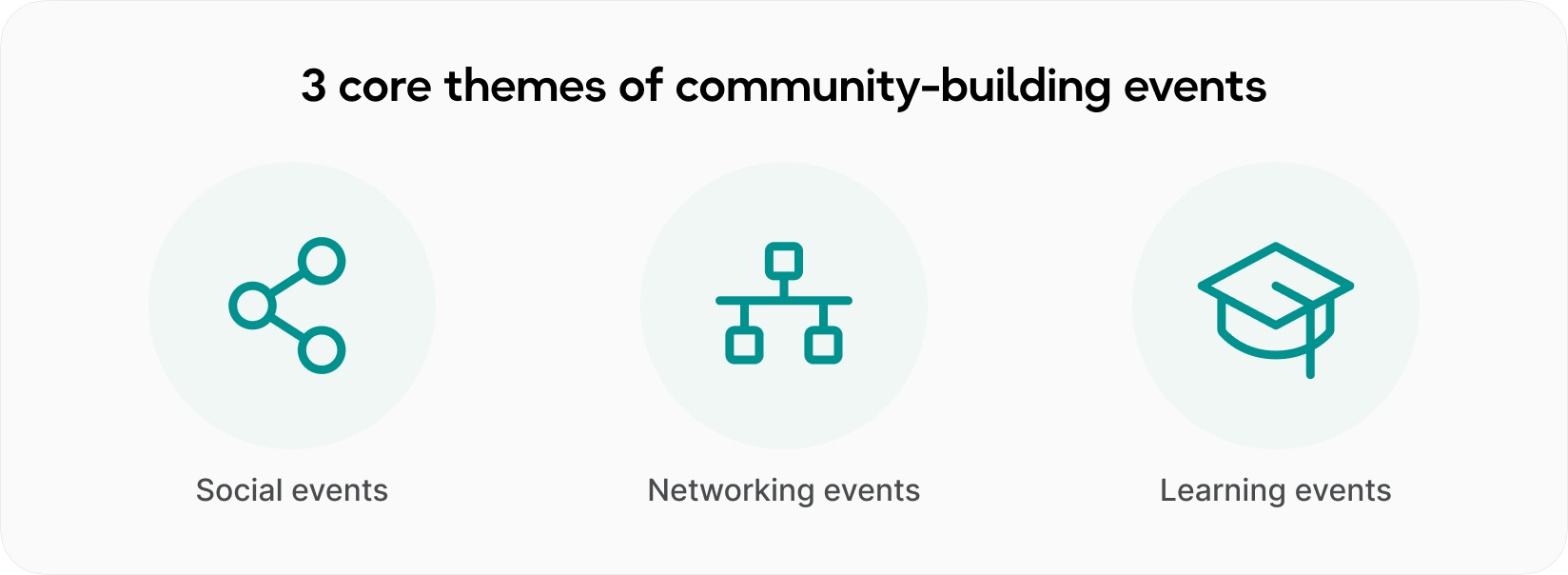
- Social events
- Networking events
- Learning events
Through this program, we build social and intellectual capital, and that builds community.
After that, it's about building a place of trust.
You need to live your values and ensure people feel safe and welcome. Your place must be friendly and supportive. And even if you're having a bad day, you don't take it out on the customer. The customer might take it out on you, but whatever they do, don’t retaliate! Difficult stuff comes up in the communities, and how you deal with that is part of what helps people feel safe—or not.
So, ask yourself what communities you are involved in and how you got involved. Learn from that. Experiment.
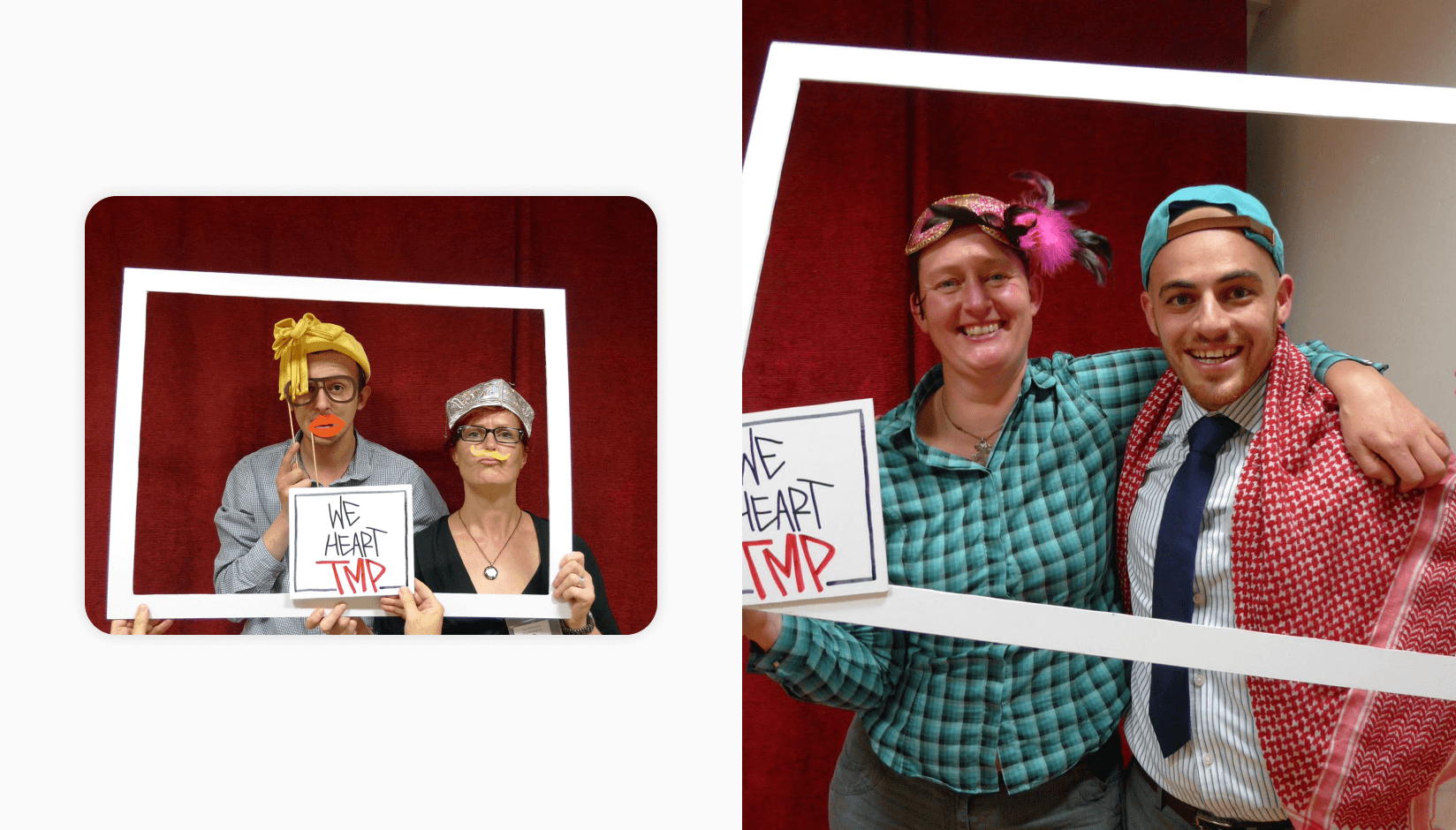
There are different types of communities, informal and formal, but they usually form and cluster around a shared interest, passion, or place.
Co-locating specifically around a niche audience works in a city like Edinburgh but wouldn’t in smaller towns. So, if there aren’t enough potential customers in the area, don't be too restrictive about trying to speak to a particular audience.
10. Please tell us a few words about the coworking hub for social innovators. What it is, and what it does.
The Melting Pot was specifically developed to support a community of people interested in social impact: leaders, social innovators, non-profit and profit organizations, and people who really want to make the world a better place at their heart.
Right now, at the start of 2023, The Melting Pot has three business arms. One of them is our coworking hub. It is 6000 square feet in the center of Edinburgh, located right by Waverley Train Station.
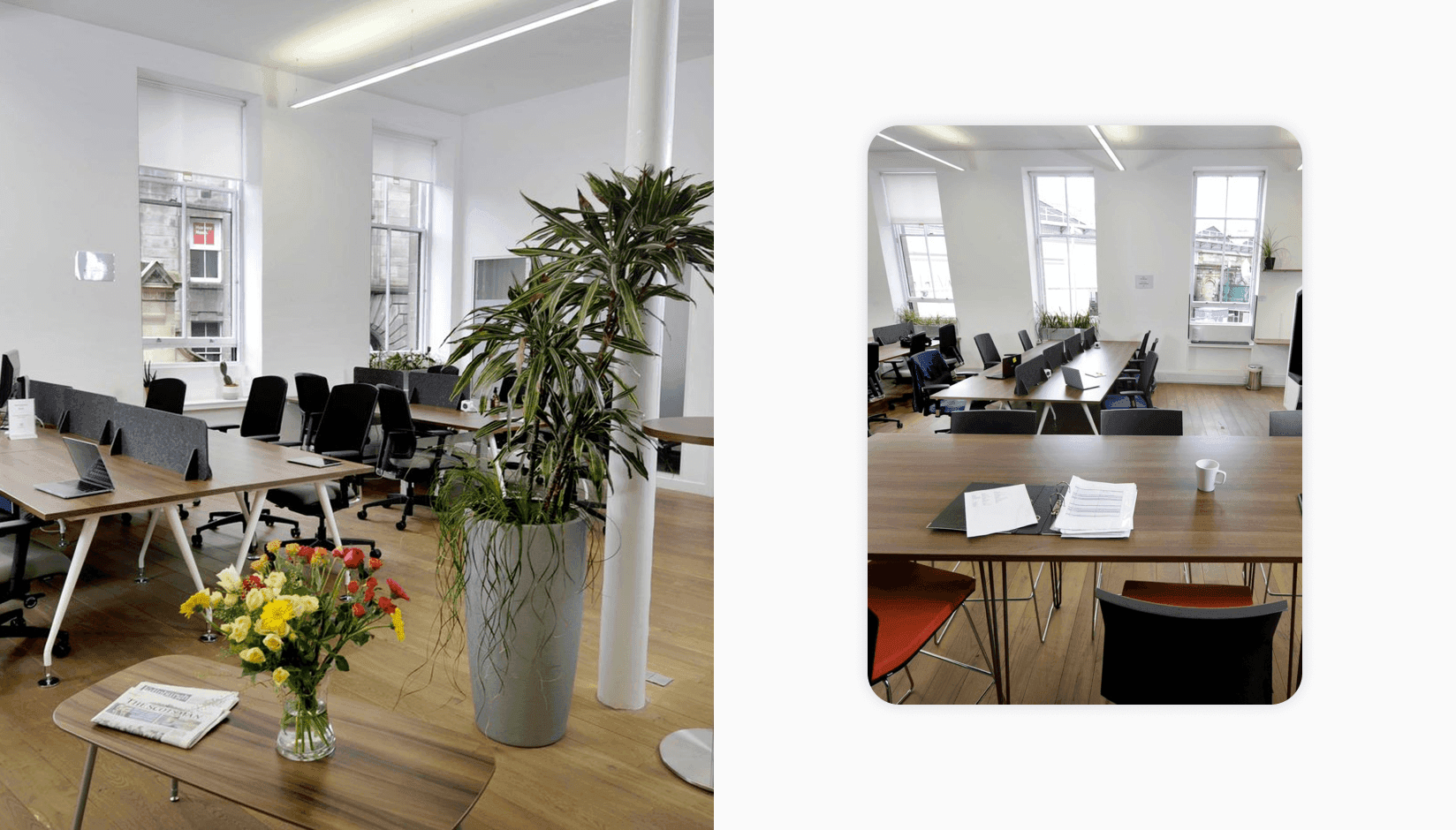
Over three floors, there’s a variety of habitats for our Members and other clients. There's a shared workspace, meeting rooms, a hot office, and more. We offer time-based packages for individuals and organizations. We also enable drop-ins to book particular rooms or the hot office.
In addition to those facilities, we have a learning, networking, and social events program for our members and sometimes for the wider Edinburgh community.
We partner with external agencies that are usually part of the entrepreneurial ecosystem in Edinburgh, Scotland, to put on joint networking events so that we can bring our different types of the community together under our roof, making a social impact, galvanizing, and mobilizing.
11. Making a social impact takes a lot of knowledge and energy. What inspires you to keep pushing forward with your projects?
I'm very much an ideas person who loves to make things happen with and through other people. I find it easiest to do that when I collaborate with other people. It gives me accountability and creates a faster momentum than working alone. It’s so much easier to do things with other people as they have skills and strengths I don’t have!

I believe in saying out loud to real people what you’re working towards. It is a simple and effective strategy for accountability and declaration of intent.
Over the years, I've had many mentors and collaborators. Some have been very hands-on, others advising as an ‘expert,’ and even more at the Trustee level. So many people have acted as a sounding board for me—in the same way I have for other social leaders. Scotland's been championing social entrepreneurship for nearly two decades, and I've been part of that wider social impact community.
I generally find inspiration from motivated, positive people. They could be other social entrepreneurs or just people who are clear about their own values and work to build a good life around those values.
Then again, there’s always the fear of failure and of having to sack people and pack it all up. That would be a devastating chore!
Conferences are a good source of inspiration and an opportunity to meet like-minded people. They've been really valuable as a way of connecting with the coworking community, practitioners, and other social impact leaders.
Over the years, I’ve come to learn that ‘living a well-balanced life’ is actually the best motivator and way to have energy. Lack of sleep, inadequate exercise, bad eating patterns, and being obsessed can mess up your health, and prevent you from performing well and succeeding. This can and does happen to all of us. And sometimes, these effort-spurts are needed to get the next phase over the line. It’s good to be able to pull back at times if you’re not a ‘steady-Eddie’ type of person.
I’ve also learned that it’s important never to judge yourself by what other people have achieved. It's not an easy journey to become a leader. Everyone has their failures and achievements, their public and private lives.
12. Are social impact and innovation projects profitable? What are the most lucrative amenities/offers?
Social impact can be made by for-profit or non-profit distributing organizations. The company’s legal structure significantly affects the opportunities and constraints they face as an organization.
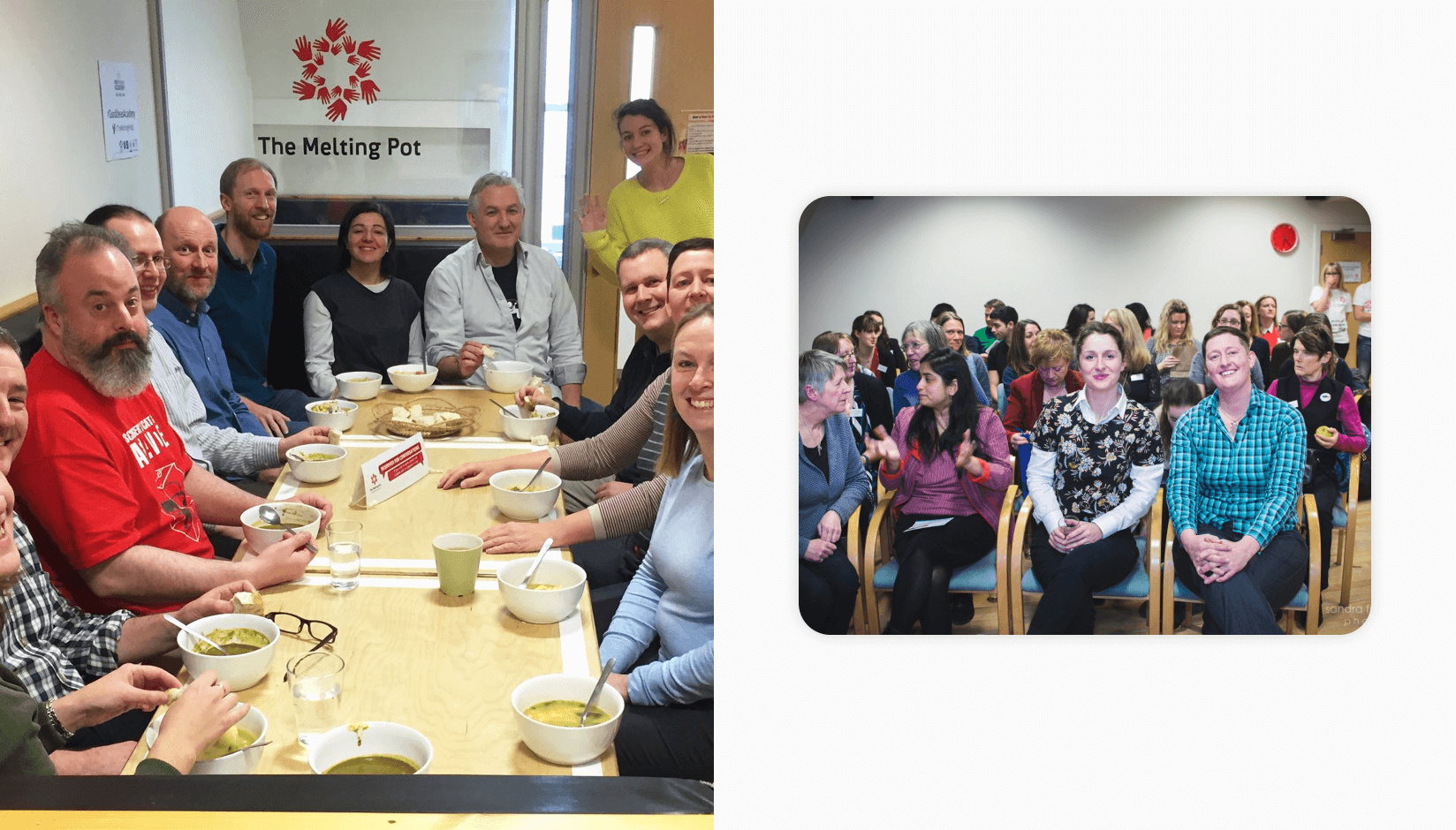
In my opinion, Third sector business models are more complex to deliver than private companies. This is because you’ve got to speak to and engage two types of customers. One is the customer who will pay for the social impact service you're trying to deliver: the funder, philanthropist, donor, or public sector. Then you have the beneficiaries of that service or product, who may or may not pay for that service/ product. Bringing that all together is complex!
Some social impact projects make money. But most Third Sector organizations I know run on a shoestring budget, doing amazing work with limited resources, and find it difficult to build reserves, which, in fact, you can be penalized for doing by funders!
We are also ‘told’ we should look to the ‘business’ world—to learn how to do ‘business better.’ But we’re not doing ‘business.’ We run an organization to deliver services which create social impact.
The Melting Pot is a registered charity. We are a ‘non-profit’ organization and reinvest all our profits into activities that meet our mission—to stimulate and support social innovation.
Over the years, we’ve been partially resourced to develop and deliver socially innovative projects. The money has come from a variety of investors, including funders, corporate sponsors, governmental divisions, and individuals.
We have developed reserves—which are for a rainy day or for research and development of new ideas that will make a social impact and/or money.
In terms of what coworking amenities make money and are valuable, then it’s obvious that size matters. The scale of your premises and the extent of your operations matters. Often the main expense in any business is premises and staff, particularly if your premises are a central part of your service delivery.
If you want to create a coworking hub in a small town, it is likely to be and remain a small business. The alternative is a small network of hubs.
But it's okay if you only have one hub in one town! There’s nothing wrong with this if it gives you and your family, or just you, the income you need and the resources you need to deliver that service. Just make sure you’re not volunteering for 20 years. It's just the same as running a local bar or a café.
13. What are you most proud of at the moment?
What I'm proud of at the moment is having not just survived Covid but having thrived over the last few years. Honestly, The Melting Pot, still being here after the last few years, is just great. Surviving comes before thriving. It’s been a team effort. We all played our part in the recovery and rebuild.
Everybody tells me, “I love your new space. The team is fantastic.” So, of course, I am proud of the team and what we achieved together, and delighted at being able to sleep at night again because this particular crisis is over. There’ll be another one sooner or later….
We exceeded our sales targets for the first full year of operating, despite the lockdowns in Scotland. We've at least doubled our membership. And that's just members: it doesn’t include all of the other types of more occasional customers. As a result of the pandemic, a whole new generation of Members has emerged. New faces and a new web being woven.
Another thing I’m proud of has been the scale of our impact—over time. Making social change is neither quick nor easy. We recently evaluated the impact of 10 years of our ‘Good Ideas’ program and I’m currently evaluating the impact of our Coworking Accelerator, reviewing the support to placemakers creating independent hubs—in a variety of countries and places, including old town halls, prisons, and libraries.
It's rewarding seeing their stories of people and ideas for social change move past the initial survival phase and into a thriving place. More than most people, I know that making a social change organization work and sustaining it is a real achievement. I’m delighted to have helped so many other social impact leaders and placemakers on their own journey.
Discover how hundreds of spaces worldwide unlock success and grow better with Spacebring
14. What is your ultimate business goal for the future?
In terms of my ultimate business goal for the future, it’s simple—I want us to continue to make a social impact and help others make an impact.
We will continue to innovate ourselves and collaborate with others.
As an organization, we’re able to plan a little longer term than has been possible for the past few years. We'll be able to take a strategic look at where the organization needs to focus its energy to make a social impact over the next decade. This will be an exciting prospect, not just thinking about six months down the road, but five years, ten years. How do we want to make a social impact? Where do we offer our knowledge and expertise to help others? Where can we have the most impact? And who are the best people to put in place to lead that?
I believe the world of work and workplaces will continue to diversify. Some employers will offer remote and flexible working opportunities. There’s still a lot of change that needs to happen in the coworking world and change in the property market over the next ten years. I’d love to help strengthen the national and global ecosystems that support people to make good ideas happen wherever they are, and especially here in Scotland. The world needs people willing to publicize and promote their own ideas for a better world. And we must support them to achieve their ambitions. I just hope they learn to sleep better than I did in my manic phases!
15. Shocked to hear about you stepping down as CEO of The Melting Pot. What led to this decision?
In short – it’s the right time. It’s an age and stage thing.
As a founder, I’ve been highly successful. As a CEO, I’m tired. And as an entrepreneur, I’m a little frustrated and wish to be more nimble. I want to build up work that can be delivered remotely as I wish to travel more.
Being a CEO needs vision, drive, and energy, which I have, of course, but my driving values have shifted over the past few years, and this has broadened my goals. I’ve led and held the vision and direction for The Melting Pot since it was a seed back in 2003-4. It’s now 2023. It’s been long enough.
Every founder knows they need a successor—and there are optimal times to put that fresh leadership in place. My team and I have “rescued the ship” after the capsize caused by the pandemic. Lots has changed—for everyone. Now we’re in a bigger building and even better location. The marketplace and key players in the entrepreneurial ecosystem have changed. Our new CEO will be able to engage the customers and ecosystem with a fresh chapter. And I get to contribute to that phase in my new role, as well as support people 1-1 through coaching.
16. What will happen to all those projects you were running for The Melting Pot?
As an organization, we still offer consultancy services—to support place makers and social impact leaders, so there’ll be no change there.
My workload and priorities have been modified. Now that I’m not CEO, I no longer support the Board of Trustees and line-manage senior staff—though I remain both a Trustee and an employee on the senior team.
17. What will be your new role at TMP? Will you be available for consultancy and coaching?
My new role is ‘Executive Director of Social Innovation.’
In this part-time role, I will act as an ambassador, social innovator, and coworking expert. I provide consultancy, facilitation, and thought leadership.
Through our consultancy service, we enable others to embed excellent social innovation practices in their communities by providing them with the tools, methodologies, and frameworks.
Years ago, we did some research in Northern Ireland into the conditions of what would make social innovation flourish.

The answers are:
- Encouragement
- Fostering connections, creativity, and the generation of ideas
- Cultivation of local solutions
- Creation of safe places
- Investment in social innovation
So in my new role, I will focus on applying my skill set, capacity, networks, and ideas, to these five areas. It will be interesting to see what opens up.
I also provide 1-1 coaching of people who want to work towards their goals and live their best life. We work through the tricky times, learn about self-care and navigate transitions. It’s a powerful process.
18. Share the key takeaways from 18+ years of setting up and running a social change business.
There are so many things I’ve learned—so here’s a starting point:
- Understand your why—and tap into that as often as you can to motivate you on the incredibly long to-do list.
- Invest time in learning how to work effectively—and ‘sharpen your sword.’
- Showing up continuously is hard and draining. The journey is made up of many marathons and sprints. Make sure you take breaks and pace yourself according to how you work best. Get sleep.
- Play to your strengths and have others around you who play to your weaknesses. We can’t be good at everything, and it’s far more fun to work with others than to do it all alone.
- Not every person who comes to work with you deserves you fighting for their corner. Let them go. Likewise, think about how you can be someone others always want on the team.
- It’ll take longer and cost more than you think it’s going to. This is normal. There are too many unknowns and unknowables.
- Follow your nose and keep your head down. Momentum builds momentum. Persistence often pays off, eventually.
- It’s totally about the journey—not the destination. Make the journey count.
Side note: additional resources to get inspired
- TMP Social Impact Report 2018
- Future of the Office – Report by The Melting Pot
- Good Ideas 2022 – 10 Years of Making Change
- Get lots of supportive, challenging, creative, can-do people around you and your core ideas. You will need them.
- Every plan and budget is an iterative process. Be prepared to learn and figure it out as you go along.
- Every type of legal structure has its pros and cons. A non-profit company is no exception. People think, “if I make it a charity/social enterprise, it’ll get funding”. This simply isn’t true and is not a viable business model.The grant funding environment is only going to get tougher and tougher. Nonprofits inherit a load of complexities around power group decision-making and other stuff due to their governance structure.
- Making a social impact takes time. There are no shortcuts but do try to be agile and prototype effectively, then build out.
- Hindsight is a marvelous thing. You only get it from taking action and taking time to reflect on what’s happened.
- At the start, you might think, ‘I don’t know what I’m doing!’ But if you commit, you will learn all sorts of things as you go along—and find that most other people are making it all up as they go along too!
- Starting up and maturing an organization is not for the faint or half-hearted. Full stop.
- It’s important to know when ‘enough is enough’ and stay alive to where your heart is taking you. You’ll make yourself ill and ultimately become unfulfilled otherwise.
- Letting go is another challenge—and that’s ok. Plan for your succession. Your successors’ success is also your success—and your freedom.
I love this advice attributed to Mother Teresa:
People are often unreasonable, irrational, and self-centered. Forgive them anyway.
If you are kind, people may accuse you of selfish, ulterior motives. Be kind anyway.
If you are successful, you will win some unfaithful friends and some genuine enemies. Succeed anyway.
If you are honest and sincere, people may deceive you. Be honest and sincere anyway.
What you spend years creating, others could destroy overnight. Create anyway.
And these words, attributed to Dr. Kent Keith:
If you find serenity and happiness, some may be jealous. Be happy anyway.
The good you do today will often be forgotten. Do good anyway.
Give the best you have, and it will never be enough. Give your best anyway.
In the final analysis, it is between you and God. It was never between you and them anyway.
With a massive shout-out to ‘TMP Member’ Jane Riddle for her patience and skill editing this document, If you’re interested in freelance editing skills, please consider contacting her: Jane Riddell riddell.jane@gmail.com
In addition to Coworking, The Melting Pot provides consultancy and coaching—helping place makers create local hubs around the world. They have helped hundreds of individuals develop ‘Good Ideas’ and make social change. And they share this proven incubation program with partners for delivery in their hubs—so that good ideas can spread.
Claire continues to innovate—to develop partnerships, initiatives, and programs that help people and organizations make social change. Claire acts as an ambassador, shares her knowledge extensively, and provides executive coaching to a range of aspiring and senior leaders.
If you have more questions for Claire, find her here: LinkedIn, Website, or book an appointment through clairecarpentercoaching.com/book-a-call
If you are looking for more coworking thought leaders’ interviews, check out these ones:
- Flex Spaces at Train Stations: All You Need to Know About the Cutting-Edge Concept
- How Hub Australia Walked All the Way from Zero to Hero
- Unf*ck the Workspace to Create a Fantastic Coworking Environment for Members with Neil Usher
And don’t forget to sign up for our newsletter to get more amazing content like this right in your inbox.






